Discover Vasuki Tal A Journey Through Historical Jewel For A Perfect Retreat In 2025
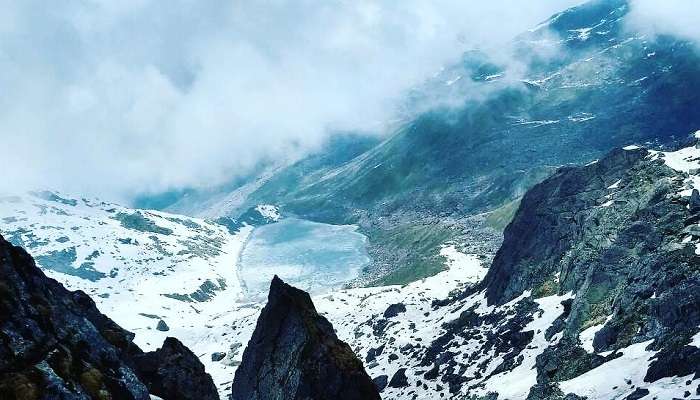
Vasuki Tal is a glacial lake nestled in the heart of the Himalayas, which has won the hearts of adventure lovers and nature enthusiasts. Vasuki Tal’s height is 4,135 metres (13,566 feet) above sea level, and clear waters reflect surrounding mountains, creating an astonishing mirror-like effect. Numerous species around Vasuki Tal reflect unparalleled biodiversity, from rare Himalayan flowers like Brahma Kamal to small fishes darting through clear waters. When you sit on the banks of Vasuki Tal, you feel a sense of calm and serenity engulfing you. It is an ideal place for meditation, reflection and bonding with nature.
Vasuki Tal History
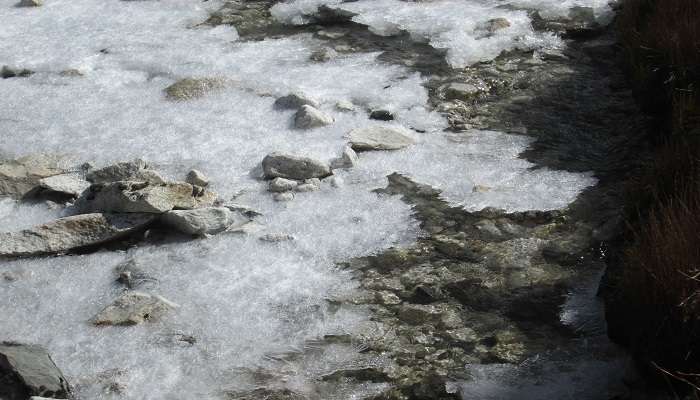
The name of this lake is derived from the ancient Indian king Vasuki, one of the most essential characters in Hindu mythology. Lord Vishnu, one of the major deities in Hinduism, is believed to bathe in Vasuki Tal before performing a Yagna at Kedarnath. The association of this lake with Lord Vishnu has given rise to spiritual significance, and it motivates many pilgrims worldwide to visit this place.
Vasuki Tal is also closely linked with the Pandavas, who are associated with India’s greatest epic, the Mahabharata. The Pandavas said they visited this lake during their journey, contributing to its mythological and cultural importance. Thus, Vasuki Tal is more than a beautiful lake; it symbolises the region’s rich spiritual and historical tapestry.
Also Read: Kedarnath In January
Vasuki Tal Trek
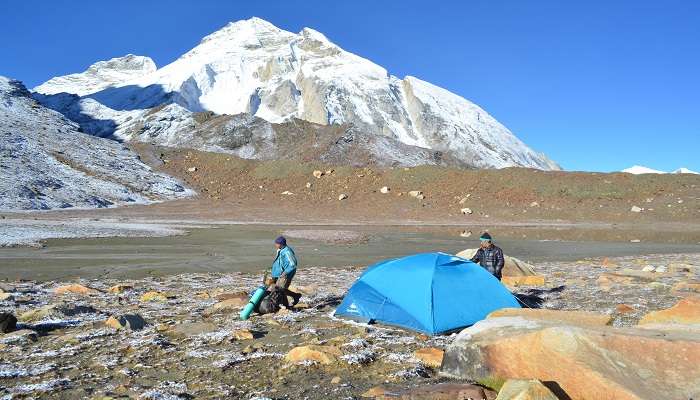
You can start the Vasuki Tal Trek from either Gaurikund or Kedarnath, depending on whether you prefer to take a mule to Gaurikund or begin the trek directly from Kedarnath. Being in good physical condition and adequately acclimated to the altitude is essential. The trek starts off relatively easy as you walk through lush green forests. However, as you ascend, the trail becomes more challenging, with steep inclines, rocky paths, and variable weather conditions. Despite these difficulties, the breathtaking views of the Himalayas will keep you motivated.
Camping amid snow-capped mountains offers a truly memorable experience. Picture yourself spending the night under a star-filled sky, with the gentle sound of water from melted snow providing a soothing lullaby. Mornings are enchanting, with the first light of day casting a pink and orange glow across the sky and illuminating the snow-covered peaks in a golden hue.
Places To Visit Near Vasuki Tal Uttarakhand
The spiritual heritage of this area around the lake has many ancient temples and shrines. To know more about the spiritual energy that flows throughout this mystic land, one must go beyond Vasuki tal as there are several sites nearby worth visiting, such as:
1. Kedarnath Temple

Kedarnath Temple is one of the most sacred Hindu shrines dedicated to Lord Shiva, who is known as the destroyer and transformer among Hindus. The temple is believed to be over a thousand years old and dates back to the Mahabharata. Situated at an altitude of 3,584 metres in the Garhwal Himalayas, Kedarnath Temple is not only an architectural marvel but also a spiritual abode visited by people from all corners of the globe. This temple lies amongst twelve Jyotirlingas, considered a radiant manifestation of Lord Shiva.
Distance from Vasuki Tal: 8 kms
Timings: 4 AM to 9 PM
Entry fee: No fee
Related Post: Homestays In Ramgarh Uttarakhand
2. Bhairavnath Temple
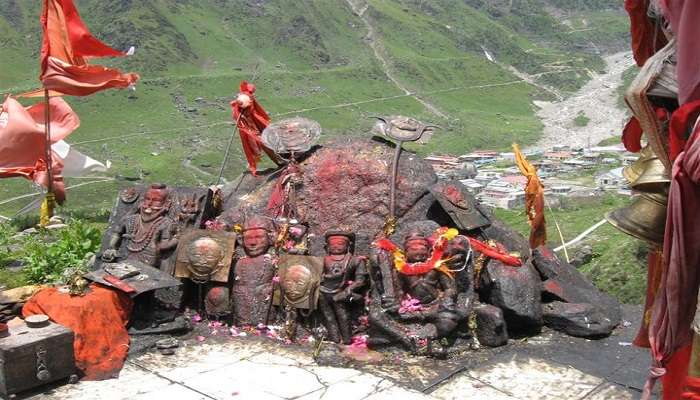
Close to Kedarnath Temple is another sacred place known as Bhairavnath Temple, which is dedicated to Bhairav, one of the fearsome incarnations of Shiva. According to belief, Lord Bhairav protects Kedarnath Valley when it is closed for six months due to heavy snowfall. The deity worshipped in Bhairavnath Temple is represented in fierce form, usually carrying a trident with him and a dog symbolising loyalty. Many people who come here to offer prayers at Kedarnath also go to the Bhairavnath Temple since they believe it is lucky to seek blessings from Lord Bhairav for protection and guidance.
Distance from Vasuki Tal: 8.7 kms
Timings: 5 AM to 9 PM
Entry fee: No fee
3. Shankaracharya Samadhi
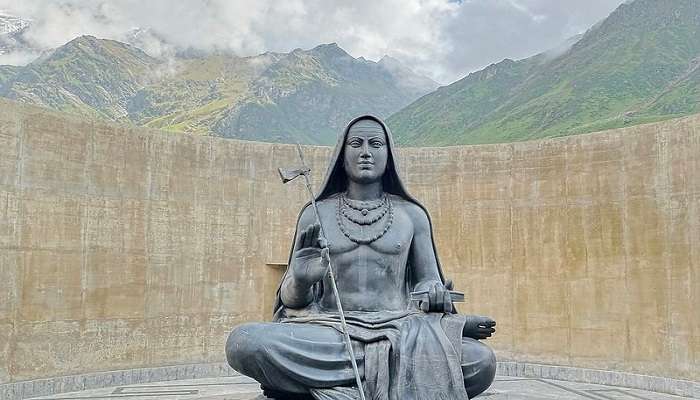
Adi Shankaracharya was an 8th-century mystic who unified the philosophy of Advaita Vedanta—a doctrine that believes in non-duality between soul (Atman) and god (Brahman). His teachings have had a significant impact on Hinduism as well as Indian spirituality, with his followers spreading all over the globe. Adi Shankaracharya spent his final days in Kedarnath after travelling throughout India, spreading his teachings. It is said that he achieved nirvana or liberation from samsara at this very spot. To recognise his contributions and spiritual significance, a Samadhi meaning memorial was constructed where it is believed he left his mortal remains behind.
Distance from Vasuki Tal: 8 kms
Timings: Open 24 hours
Entry fee: No fee
Related Post: Gwaldam In Uttarakhand
4. Gaurikund
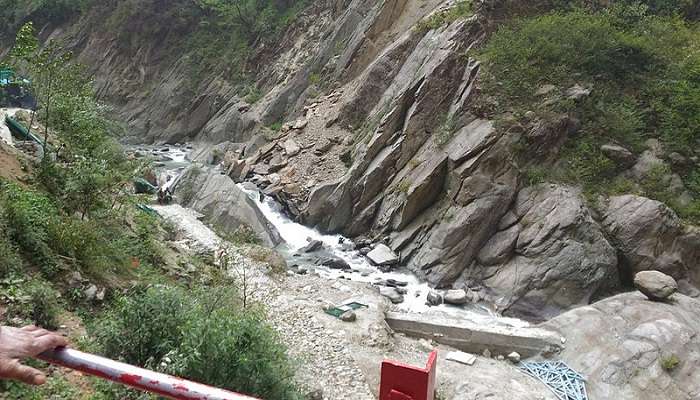
Gaurikund is the base camp for the Kedarnath Temple trek, essential in Hindu mythology. According to ancient legends, Gaurikund is where Goddess Parvati, also known as Gauri, did her tapasya (meditation), and it was so powerful that it eventually led to her union with Lord Shiva, one of the most celebrated divine couples in Hinduism. According to another legend, Lord Shiva once got angry with his son and cut off his head at Gaurikund. He later replaced it with an elephant’s head. In Gaurikund, a natural hot water spring is believed to have healing powers.
Distance from Vasuki Tal: 23 kms
Timings: 4 AM to 9 PM
Entry fee: No fee
5. Triyuginarayan Temple
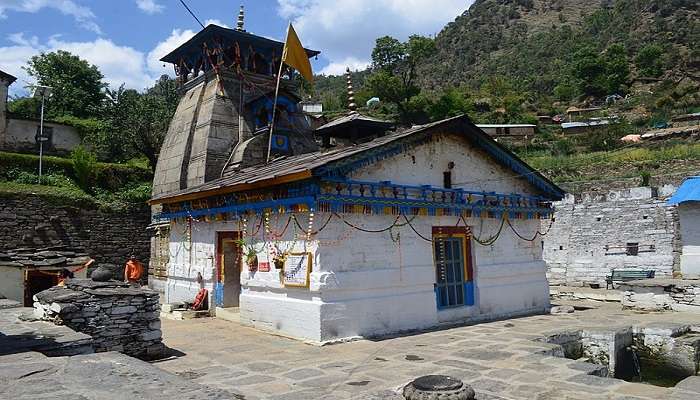
Triyuginarayan Temple is an ancient temple where Lord Shiva is believed to have married Goddess Parvati. Its name, “Triyuginarayan’’ means “the temple of three yugas”, as it has witnessed three epochs or ages in Hinduism, adding more spiritual significance. The exact location of the wedding is indicated by a stone called Brahma Shila, which is situated at the temple. There is a flame outside the temple that is said to have been raging since time immemorial and is thought to be the same one present at that holy matrimonial ceremony.
Distance from Vasuki Tal: 38 kms
Timings: 7 AM to 2 PM and 4 PM to 8 PM
Entry fee: No fee
Related Post: Golu Devta Temple
Best Time To Visit Vasuki Tal Uttarakhand

The best time to visit is between May and June and September and October when the climate remains moderate compared to other months. However, there can be occasional rain and snowfall even during these months.
It is the right time to visit if you want something more challenging than winter. However, you must have appropriate equipment to survive in severe cold and difficult weather conditions.
You May Also Like To Read: Bageshwar
Vasuki Tal is a hidden gem that deserves a place on every adventure lover’s bucket list. Its pristine beauty, rich history, and challenging trek make it a truly unforgettable experience. So, pack your bags and book your trip to Uttarakhand to immerse yourself in the magic of the Himalayas and capture memories for a lifetime.
For our editorial codes of conduct and copyright disclaimer, please click here.
Cover Image Source: Hari Kandala for Wikimedia Commons
Frequently Asked Questions About Vasuki Tal
Is Vasuki Tal Trek suitable for beginners?
Beginners can go on a moderately complex trek to Vasuki Tal but must be physically fit. So plan your trip accordingly.
Can I go alone on a trek to Vasuki Tal?
Yes, you can go alone on a trek to Vasuki Tal, but due to unpredictable weather conditions, it is advisable to have a guide.
What should I pack for the trek to Vasuki Tal?
Some essential things to pack are warm clothes, sturdy hiking boots, a sleeping bag, and a water bottle to avoid problems.
Are there any accommodation options near Vasuki Tal?
Few accommodation options are available in Kedarnath, but for an adventurous experience, you can go camping near Vasuki Tal.
What should I do if I experience altitude sickness?
If you have altitude sickness symptoms such as headache, nausea, shortness of breath, and tiredness, immediately go down to a lower altitude. If the symptoms persist, it’s advisable to consult a doctor.
People Also Read:
Nachiketa Tal Satopanth Tal Deepak Tal

Unveil the hidden treasures of the globe and turn every travel dream into reality. As a Content Writer, I am passionate enough to craft stories from ancient wonders to modern marvels. My words paint the picture-perfect itinerary for unforgettable experiences. Let my words be your trusted guide to immerse in the diverse culture and discover the beauty of the unknown.











